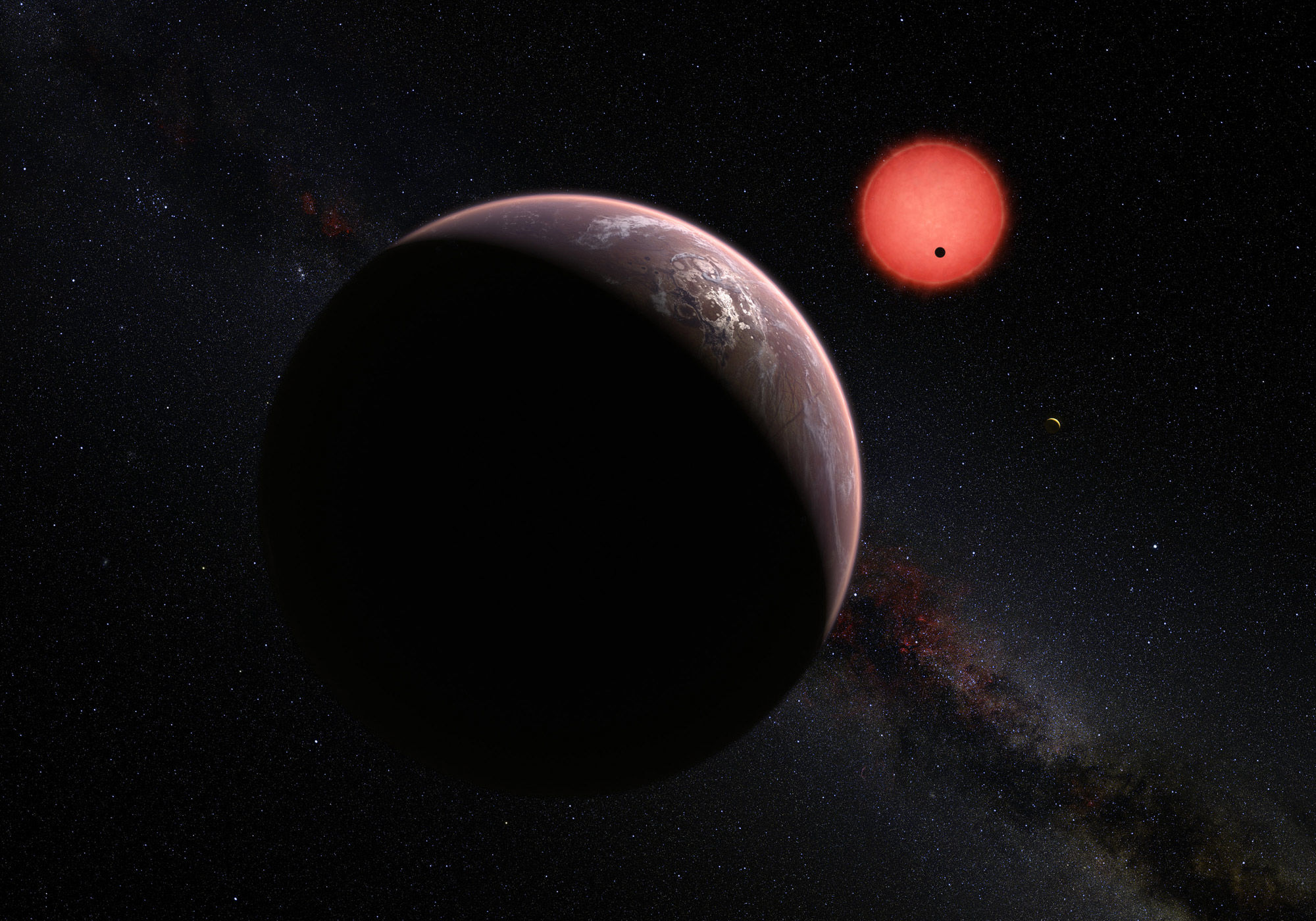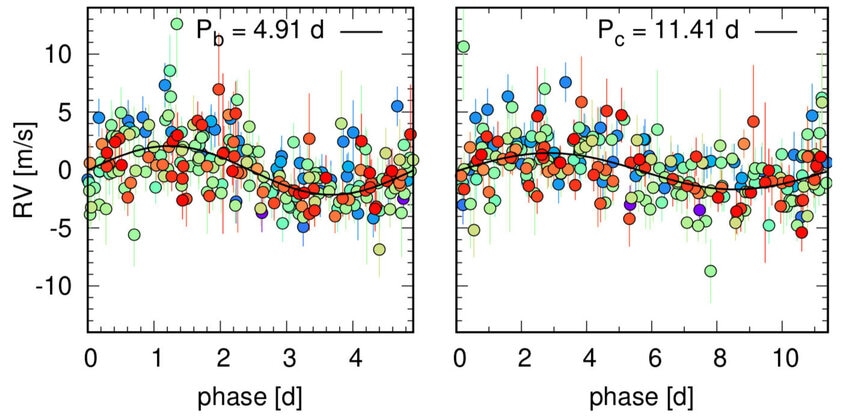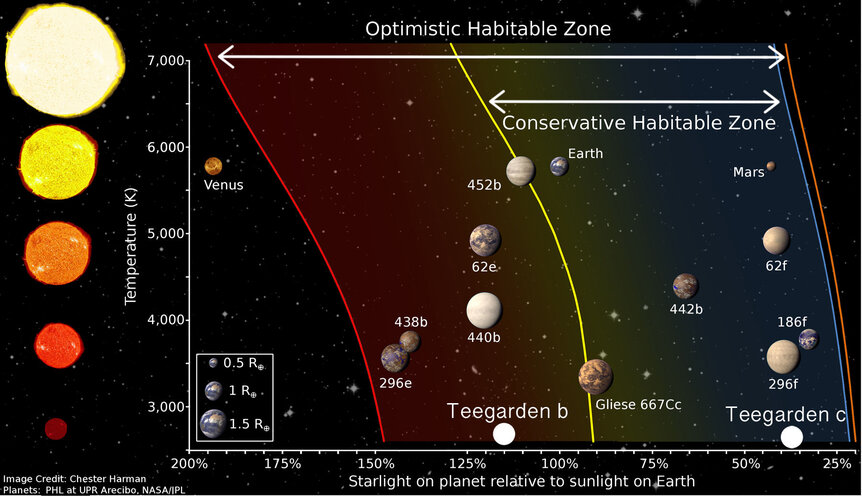Create a free profile to get unlimited access to exclusive videos, sweepstakes, and more!
Two Earth-sized planets found in a nearby star's habitable zone!

Every time I get a press release about exoplanets, I wonder just how close Star Trek is to getting it right: Astronomers have just announced the discovery of two Earth-mass planets orbiting in a nearby star’s habitable zone! And when I say nearby, I mean nearby: It's 12.5 light years away, making it the 24th closest star to the Sun.
Whoa.
The star is called Teegarden’s star, and if you've never heard of it you can be forgiven: It was only discovered in 2003! It's a very low mass star, what we call a red dwarf, close to the lowest mass you can have and still call yourself a star. Its mass is a mere 0.089 times the Sun's (about 90 times Jupiter’s mass), its diameter 1/10th the Sun’s, and it shines at a feeble 0.00073 times the Sun’s luminosity. That makes it very faint in our sky (about 15th magnitude, meaning you'd need a decent telescope to be able to see it at all).
But that turns out to be good! The planets discovered are pretty close to the star, and because the star is so cool — its temperature is something like 2,380 to 2,630°C (the Sun’s is 5,500°) — huddling close to it means the planets could both be temperate. That's not known at all, really, since it depends a lot on the planets themselves.
The planets were found using an instrument called CARMENES, which stands for Calar Alto high-Resolution search for M dwarfs with Exoearths with Near-infrared and optical Échelle Spectrographs). That's a mouthful, but it means an extremely sensitive detector mounted on a telescope at the Calar Alto observatory in Spain that looks for alien worlds like Earth orbiting very cool red dwarfs.
It’s a spectrograph, which breaks light up into tens of thousands of individual colors. A lot of information from a star can be gleaned this way, including its temperature, chemical composition, spin, and motion. It’s that last that’s important. In a technical sense planets don't orbit stars; instead they both orbit their common center of mass (called the barycenter). The planet has a big orbit and the star a small one. You can't see that directly in general, but as the star moves in its orbit it sometimes moves toward us and sometimes away (this is called a reflex velocity, a response to the planet tugging on it), and that creates a Doppler shift in its spectrum. That can be measured, though for low mass planets it's tough.
But CARMENES is designed to do it, and do it it did. Astronomers found two separate motions for the star, which they interpret as being the reflex velocities of the star from the two planets. Unfortunately, the planets don't transit the star, so we don’t know how big they are, but a lot of other information can be found.
The inner planet, called Teegarden b, has an orbit that lasts 4.91 days. That means its "year" is less than a week! The orbit appears to be circular, and the planet is 3.8 million kilometers from the star (compare that to Mercury, which orbits the Sun at about 60 million km). Its mass is what’s so exciting, though: It has a minimum mass of 1.05 times Earth’s! It might be a little more massive than that, because the reflex velocity method only gives a minimum mass. However, the astronomers did some statistical analysis and found a likely mass of 1.25 times Earth.
The second planet, Teegarden c, has an orbit of 11.41 days, a distance from the star of 6.6 million km, and a minimum mass of 1.11 Earths (and a likely one of 1.33 times our planet’s mass).
If they are made of metal, rock, and water like Earth is, they'd be a bit larger than Earth, but not by much.
But there’s more! Given the star's distance from the planets, size, and temperature, the astronomers calculated that Teegarden b gets about 1.15 times the energy from its star that Earth does from the Sun, while planet c gets about 0.37. That puts both of them in the (optimistic) habitable zone of the star! That's a rough guideline astronomers use to measure Earth-like conditions, the distance a planet can be from its star such that liquid water can exist on the surface.
This depends on a lot of things, including very strongly the atmosphere of a planet, which affects how much heat the planet can absorb and retain. Technically Venus and Mars are in the Sun's HZ, but look at them. Earth-like they ain't.
Still, this is hopeful. Another guideline astronomers use is the Earth Similarity Index (or ESI), which takes into account a lot of factors to estimate how Earth-like a planet is (0 is completely different, and 1 is Earth). Planet b has an ESI of 0.94, making it potentially the most Earth-like planet yet found.
And it's only 12.5 light years away!
Incidentally, these are the first two planets ever discovered using the reflex velocity method for a star this cool. Only two other very cool stars have been found to have planets (Proxima Centauri and TRAPPIST-1), and Teegarden is cooler than either. It may have more planets, but if they're farther out than planet c they'd be very hard to detect.
That’s very interesting indeed. Red dwarfs are by far the most common stars in the Universe. And the more of them we observe, the more we find that have not only planets, but Earth-sized planets. It's not understood why, exactly, but these kinds of stars tend to have smaller planets orbiting them versus bigger ones like Jupiter.
And that, in turn, increases the chance considerably that planets the same size and mass as Earth are common. Whether they are actually livable — Earth-like — or not is anyone’s guess right now. But that’s interesting.
Also, the star (and therefore its planets) are likely pretty old, perhaps 8 billion years or so — the Sun and Earth are only a bit over half that old. So if these planets are potentially life-supporting, they’ve had a lot longer to hang around than we have. Just food for thought.
But in that vein … If you read a lot of sci-fi and watch it on TV, you may be familiar with Star Trek, as well as Isaac Asimov’s Foundation series of books. In Foundation, planets were rare, and intelligent life except for humans nonexistent in the galaxy.
In Star Trek, planets like ours are everywhere, and life abounds.
It looks more like Gene Roddenberry was right, at least for the abundance of Earth-like worlds. I certainly hope so.
















